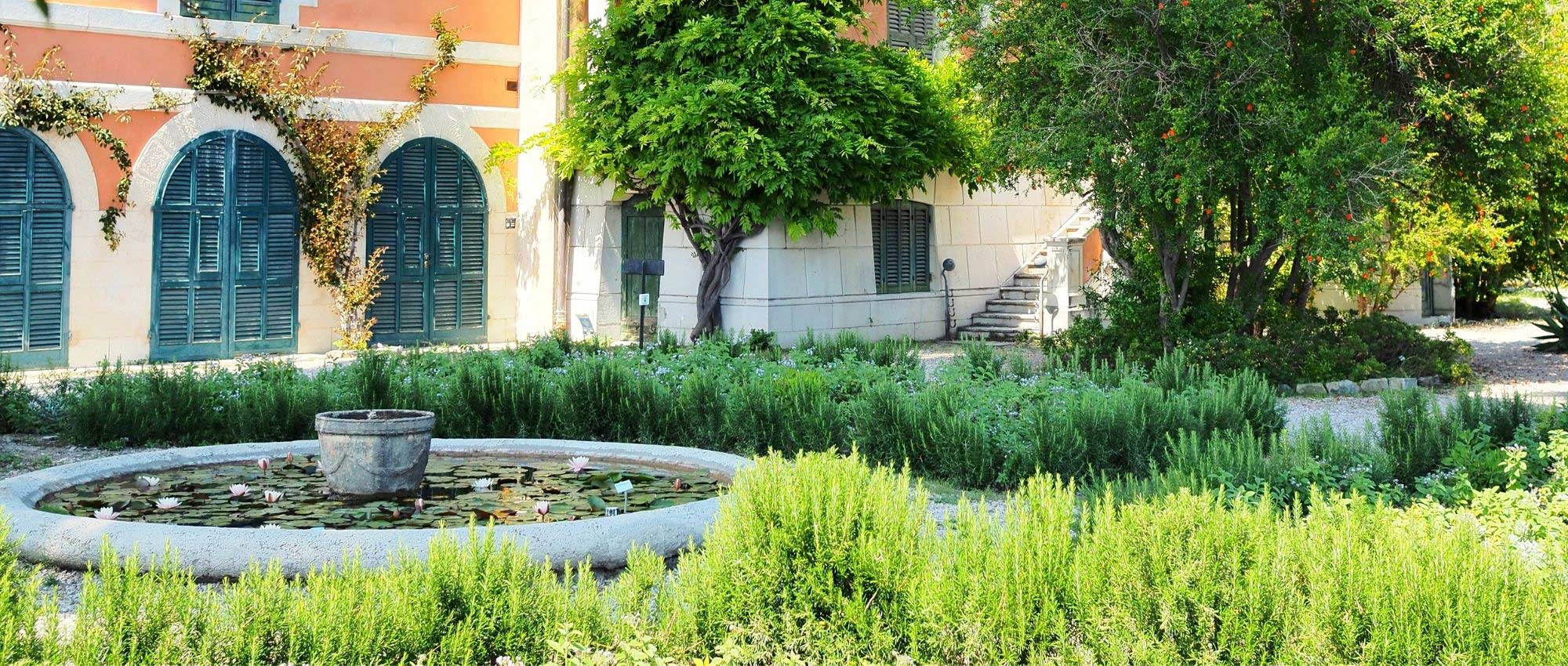
7 tips for creating a successful Mediterranean garden
Discover how to succeed, step by step!
Summary
Mediterranean gardens are very pleasant, warm spaces that evoke holidays, sun and lazing about. They provide an escape! They are often fairly stony, with plants adapted to arid climates. Many aromatic and fragrant plants are found there, such as lavender, helichrysum and rosemary. These gardens require little maintenance, since plants adapted to Mediterranean climate do fine without watering or additional feeding. They are not, however, restricted to Mediterranean coastal regions, but can also be created elsewhere in France by, of course, choosing hardy plants.
Within Mediterranean gardens themselves, several styles or atmospheres are possible: these gardens are often dry and stony, evoking garrigue, with rock-garden plants and aromatic plants (lavender, thyme, helichrysum, etc.), but they can also adopt a fresher, lusher style with exotic plants with generous foliage and vivid flowering (Strelitzia, bougainvillea, palms…).
So, how to organise a Mediterranean garden? And which plants to choose for your situation? Discover all our tips now!
Organise the space
Ideally, a Mediterranean garden should face due south to benefit from maximum sun and warmth. The soil will warm up more quickly in spring. If you create your garden outside the Mediterranean region, it is all the more important to choose a well‑sunny site and to work on drainage, as this will help plants better withstand the cold. You can also provide windbreak hedges to protect plants from cold winds.
If your garden is on a slope, we recommend creating tiered terraces, with dry‑stone walls! Likewise, you can create a long perspective, with a central path, descending steps and, on each side, beds and rockeries. You can also design a winding route down to the bottom of the plot to soften the slope.
It is not necessary to include a short grass meadow. In the Mediterranean basin, a short grass meadow will be difficult to keep green all year round and may become very dry in summer. If you nevertheless want a lawn effect, opt for plants such as Lippia nodiflora or Zoysia tenuifolia, which cope fairly well with summer heat and drought.
You can, however, make room for a fountain, a water mirror or a water channel. This will create a cooler atmosphere and help cope with high temperatures, while the ripple of the water will have a very soothing effect!
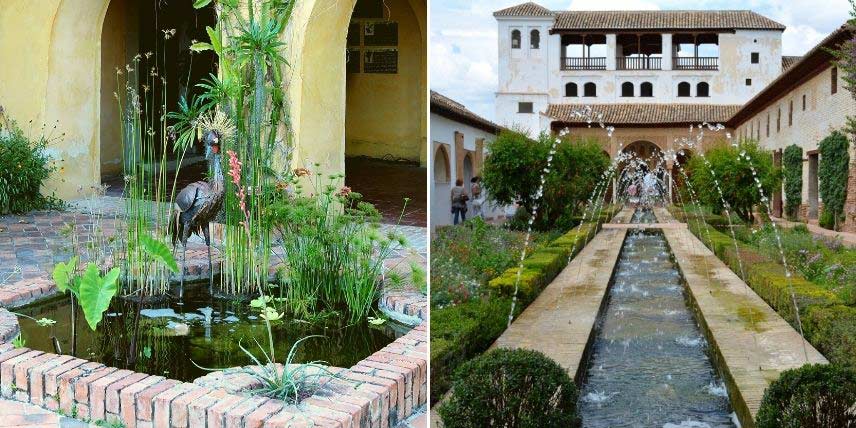
A pond at Val Rahmeh garden, Menton / a water path at the Alhambra gardens, Granada
You may also read
Mediterranean garden: 10 iconic plants to landscape itCreate rockeries
We recommend creating rockeries and raised beds: this will improve drainage while showcasing your plants. That way water does not stagnate and soil dries more quickly. Many Mediterranean plants thrive in rockeries, in a well-draining, fairly poor substrate, because they are adapted to drought. For example, form a mound and mix gravel, stones and coarse sand into soil to help water infiltrate. Place some large stones to hold soil in place and for aesthetic effect, and create pockets of soil between them where you can plant your plants.
For more advice, discover our sheet Create a rockery – our tips for success
Beyond rockeries, generally we recommend giving plenty of space to mineral elements. Stones and gravel help drain soil and recall to plants their dry, stony native medium. Moreover, they have the advantage of storing heat during the day and releasing it at night.
Do not hesitate to build a few dry-stone walls, whether to define spaces or to create terraces and retain soil, as with the traditional restanques of Provence. For pathways, consider flagstone or paved paths, or calade paving (with pebbles set on edge).
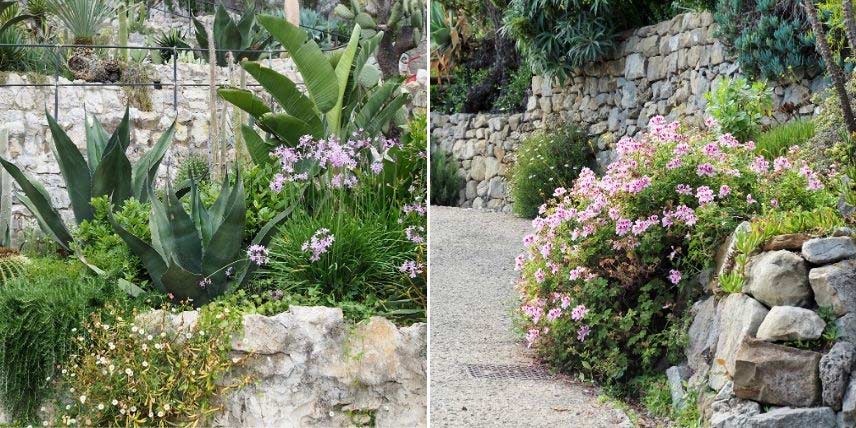
Rockeries are omnipresent at the Exotic Garden of Èze on the French Riviera / Stone walls at the Hanbury botanical garden in Ventimiglia, Italy
Discover other Mediterranean plants
View All →Available in 1 sizes
Available in 1 sizes
Available in 2 sizes
Available in 1 sizes
Available in 0 sizes
Available in 1 sizes
Available in 1 sizes
Available in 1 sizes
Available in 1 sizes
Available in 0 sizes
Set aside areas for relaxation!
As Mediterranean gardens are synonymous with relaxation and evoke holidays, create spaces to rest and enjoy! For example, install a garden seating area in shade, with a pergola, an arbour or a tree to shelter it. This will also provide a pleasant space for dining outdoors when weather is fine. Also, the pergola or arbour you install can serve as a support for climbing plants! Allow some space for deckchairs, sun loungers, hammocks, cushions… You will create a warm atmosphere that invites relaxation and enjoyment. If you’re planning on a grand scale, you could also include an outdoor kitchen! For furniture, we recommend avoiding dark colours, as they can become very hot in sun. For landscaping, favour natural materials such as wood or stone.
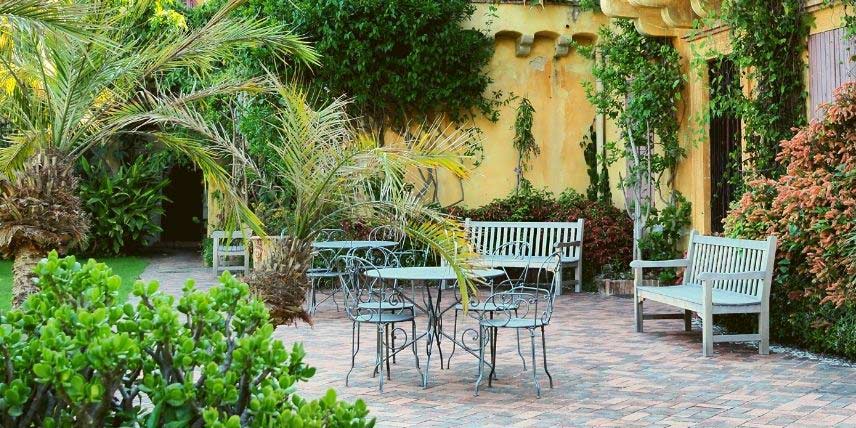
Val Rahmeh garden, Menton
Outside the Mediterranean region, take hardiness into account!
If you live outside Mediterranean basin, it is important to choose hardy plants! South-facing exposure and good drainage are crucial, as they will help plants withstand low temperatures. For trees and bushes, you can plant strawberry trees, crape myrtles, Provence cypresses, laurustinus, possibly a fig tree or a pomegranate. You can also plant a palm Chamaerops humilis (it tolerates -10 to -12°C), endemic to Mediterranean basin, and enjoy exotic silhouette of yuccas. Yucca filamentosa, for example, is very hardy, tolerating -20 to -25°C! Also consider planting some bushes (for example oleander or citrus trees) in large containers that you bring indoors for winter. Aromatic and scented plants are particularly important in Mediterranean gardens: plant, for example, lavenders, thyme, rosemary, santolina, common sage, or helichrysum. To add colour, choose perennials such as Phlomis fruticosa, agapanthus (choose hardy varieties such as ‘Navy Blue’ or ‘Headbourne Blue’), Euphorbia characias, eryngium…
If you want to grow succulents, opt for sedums, houseleeks, agaves (for example Agave havardiana, which tolerates -20°C) or even hardy cacti (such as Opuntia phaeacantha ‘Mojavensis’).
Olive trees, umbrella pines, cistus and myrtle can withstand short frosts of around -10°C in well-drained soil.
If you grow slightly more tender plants, they will need winter protection. You can also place potted plants on terrace, then move them under cover for winter.
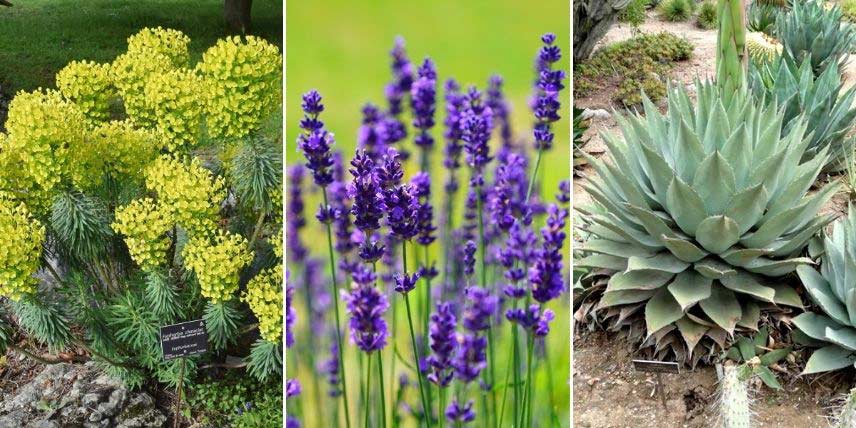
Some hardy plants that can fit well into a Mediterranean garden: Euphorbia characias (photo Krzysztof Golik), Lavender, Agave havardiana
Some regions, however, outside Mediterranean zone, have a particularly mild climate, where frost risk is low, for example along Brittany coast or parts of south-west basin, as oceanic influence moderates climate. If you have a garden by the sea in particular, take the opportunity to grow exotic plants that are not very hardy. Enjoy bright flowering of nerines, Aloe striatula, lantana, Erythrina, abutilon (in particular Abutilon megapotamicum), bottlebrush or plumbago. Also consider planting olive trees for their superb twisted architecture, as well as palms and pittosporum. Also enjoy delicate mauve flowering of Tulbaghia violacea!
Which plants for a garden in the Mediterranean region?
You can create a garrigue garden, such as those found on the limestone hills of Provence and the Languedoc. Create a very wild, natural setting, with small sinuate paths winding between the beds, and many scented plants. For trees and bushes, plant olive trees, holm oaks, gorse, cistus… Also plant myrtle, an evergreen bush that offers beautiful white flowers in summer. You can add thyme, rosemary, asphodels, helianthemums, teucrium, grasses… For colours, favour plants with grey, silvery or bluish foliage: santolina, helichrysum, Salvia argentea, Artemisia, Euphorbia myrsinites… Garrigue gardens have the advantage of being typically ecological and economical, and they require very little attention.
Succulent plants also have their place: cacti, agaves, Opuntia, Aloe, Sedum…
The mild climate will in any case allow you to to grow a great diversity of plants! You can thus grow relatively tender plants: some cacti, Strelitzia reginae, Aloe arborescens, Watsonia, Proteas… Include southern plants, which are particularly suited to a hot, dry climate (for more, discover our guide to southern plants)! Discover also Echium fastuosum, which offers magnificent spikes of blue flowers! Enjoy Mimosa’s fragrant yellow flowering. Erythrina is a magnificent tree offering brilliant coral-red flowers!
Climbing plants are also important in Mediterranean gardens: choose bougainvillea or jasmine, and train them to climb a pergola or against the façade of your house.
For more advice on choosing plants, consult our guides: Mediterranean garden: 10 iconic plants to landscape it, 6 Mediterranean perennials for sun and dry soil and Pond in Mediterranean climate: which aquatic plants to choose?
Add decorative elements
To enhance a warm, lively feel in your garden, add a few decorative elements to bring colour. Place large terracotta pots or jars in front of the house, for example on the patio, and plant succulent plants such as sedum, houseleek, Echeveria in them. The pots can keep their natural colour, be glazed, or even be covered in mosaic. You can also hang decorations (dreamcatchers, hanging pots with macramé hangers, wind chimes, pottery…), attaching them for instance to the branches of a tree or to a pergola. It’s worthwhile to install spotlights in the garden to highlight it at dusk, allowing you to enjoy it in the evening when temperatures are mild. Also arrange colourful cushions on the patio to create a warm, welcoming space.
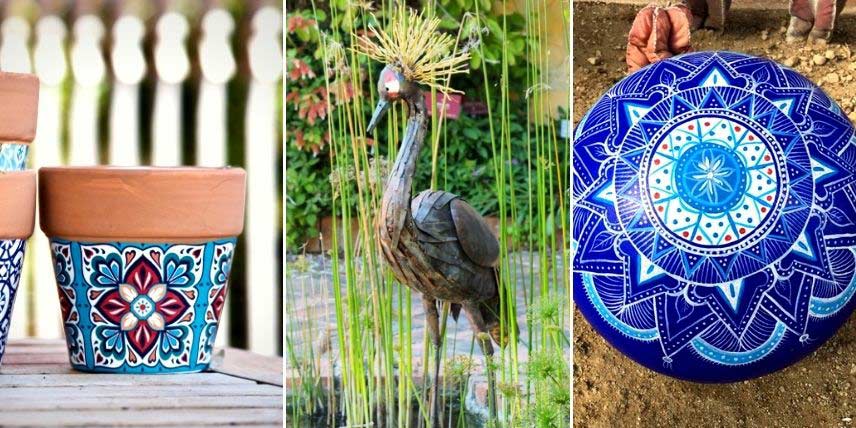
Feel free to add a touch of colour and whimsy, for example with ceramic pots, metal sculptures (Val Rahmeh garden), or spheres painted in bright tones (Pallanca exotic garden)
Also read Gwenaëlle’s advice in Terracotta in the garden: our ideas and inspiration.
And then... How to care for a Mediterranean garden?
After planting your plants, we recommend installing a mineral mulch (gravel, pouzzolana, slate…). In addition to limiting the growth of weeds, this type of mulch has the advantage of storing heat during the day to release it in the evening. It will therefore help protect your plants from the cold.
Mediterranean gardens generally require very little maintenance, since plants are undemanding in water and fertiliser. You can water at first, during the first few weeks, until they are well established. Afterwards they should not need watering. However, if your plants are a little more demanding, consider installing a drip irrigation system.
For plants in pots, water occasionally, as potting mix dries out faster than in the ground, but avoid letting water stagnate in the saucer.
If your garden is not in a Mediterranean region, the most tender plants will need horticultural fleece for winter protection, or to be moved under cover/indoors for the winter if potted.
- Subscribe!
- Contents
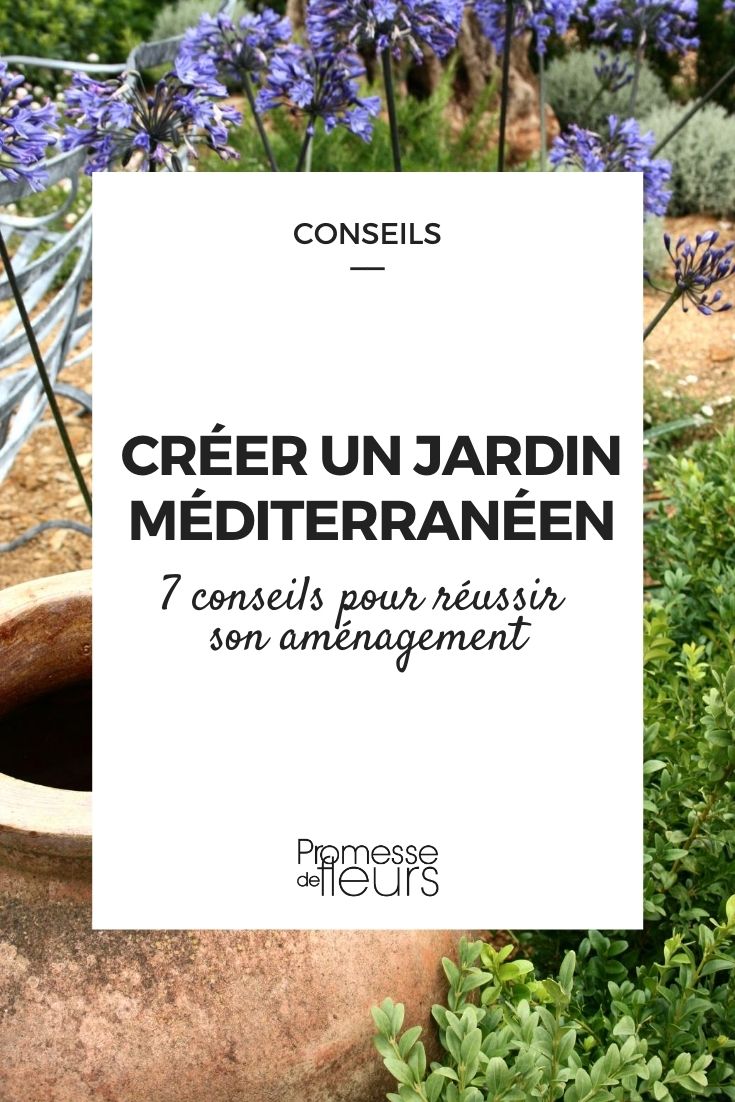































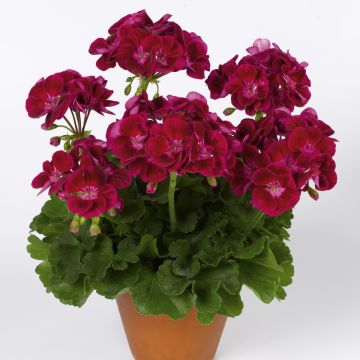

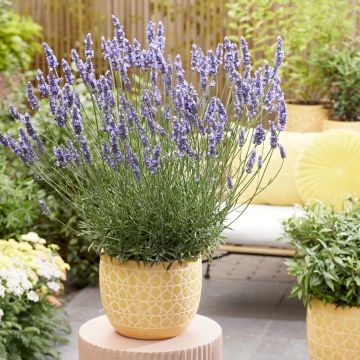
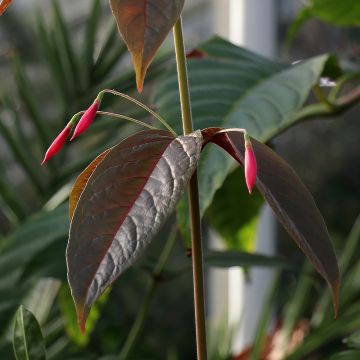
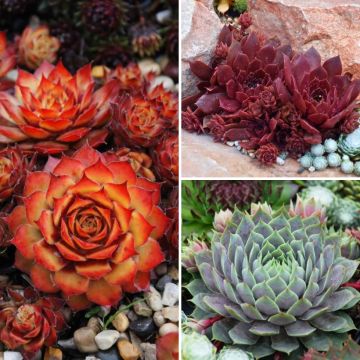
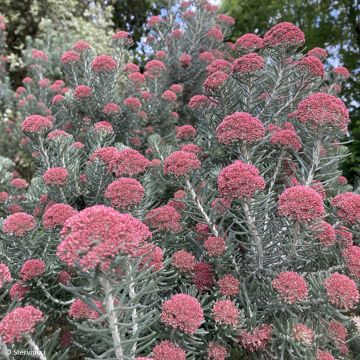
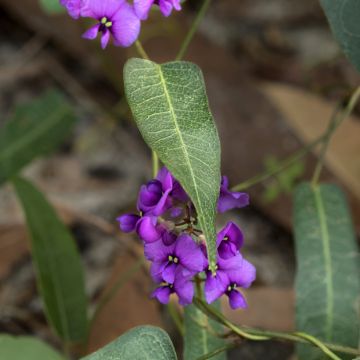



Feedbacks